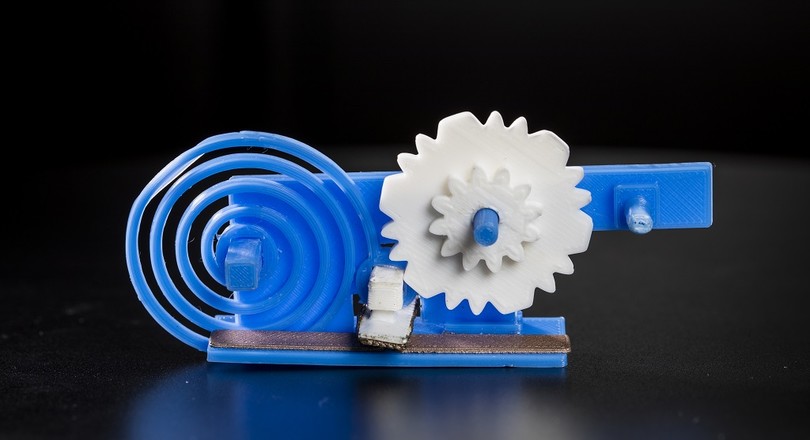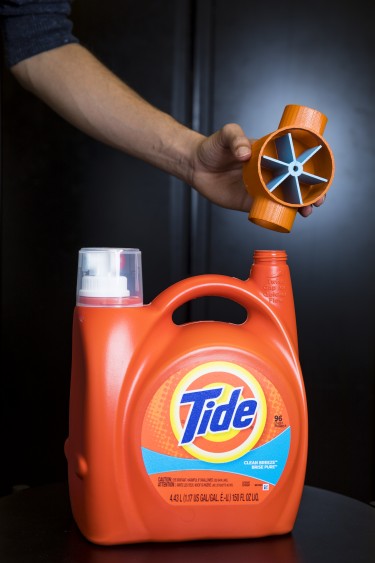
A new device can transmit digital information without any form of electronics. By reflecting Wi-Fi radio signals, it can return information to a router, which in turn translates it into an order or message. The mechanism does not require a power source and may therefore provide a solution for the Internet of Things.
According to researchers at the American University of Washington, their printed switch is the first power-free object to be created which can communicate with the Internet. They achieved this by 3D-printing a mixture of plastic and copper particles in a special mould. That mix of plastic and copper reflects Wi-Fi radio signals, which can be found all over the home, and transmits them back to the router. The object has been made in such a way that you press a switch or use another 'trigger' to change the reflection pattern. A router will recognise that change.
Ordering detergent
 A whole range of applications comes to mind. The researchers created a special cap for a bottle of detergent, for example (see photo). As long as the detergent flows out of the bottle quickly enough, the printed Wi-Fi device will not take action. But if the flow slows, the bottle is probably nearly empty. The reflective state of the device is changed, the router acknowledges the reception of an alternative signal and knows: this is the prompt to order new detergent via an online store.
A whole range of applications comes to mind. The researchers created a special cap for a bottle of detergent, for example (see photo). As long as the detergent flows out of the bottle quickly enough, the printed Wi-Fi device will not take action. But if the flow slows, the bottle is probably nearly empty. The reflective state of the device is changed, the router acknowledges the reception of an alternative signal and knows: this is the prompt to order new detergent via an online store.
The entire process is power-free: the sensor on the bottle and the message sent to the router both work passively. Only the router itself needs to be plugged in to the mains network. This may prove to be a very useful approach as the Internet of Things (IoT) gains importance. If almost every object in the home needs to be connected to the web, we'll soon have a shortage of electrical sockets and batteries. A power-free installation is a solution for that problem, and renders the IoT more practical.
The researchers were also able to print a mixture of iron and plastic. The objects they created contained static information, and transmitted a unique reflection pattern to a router. This may prove useful as a form of embedded bar code.
If you found this article interesting, subscribe for free to our weekly newsletter!
Nieuwsbrief
Vond je dit een interessant artikel, abonneer je dan gratis op onze wekelijkse nieuwsbrief.

